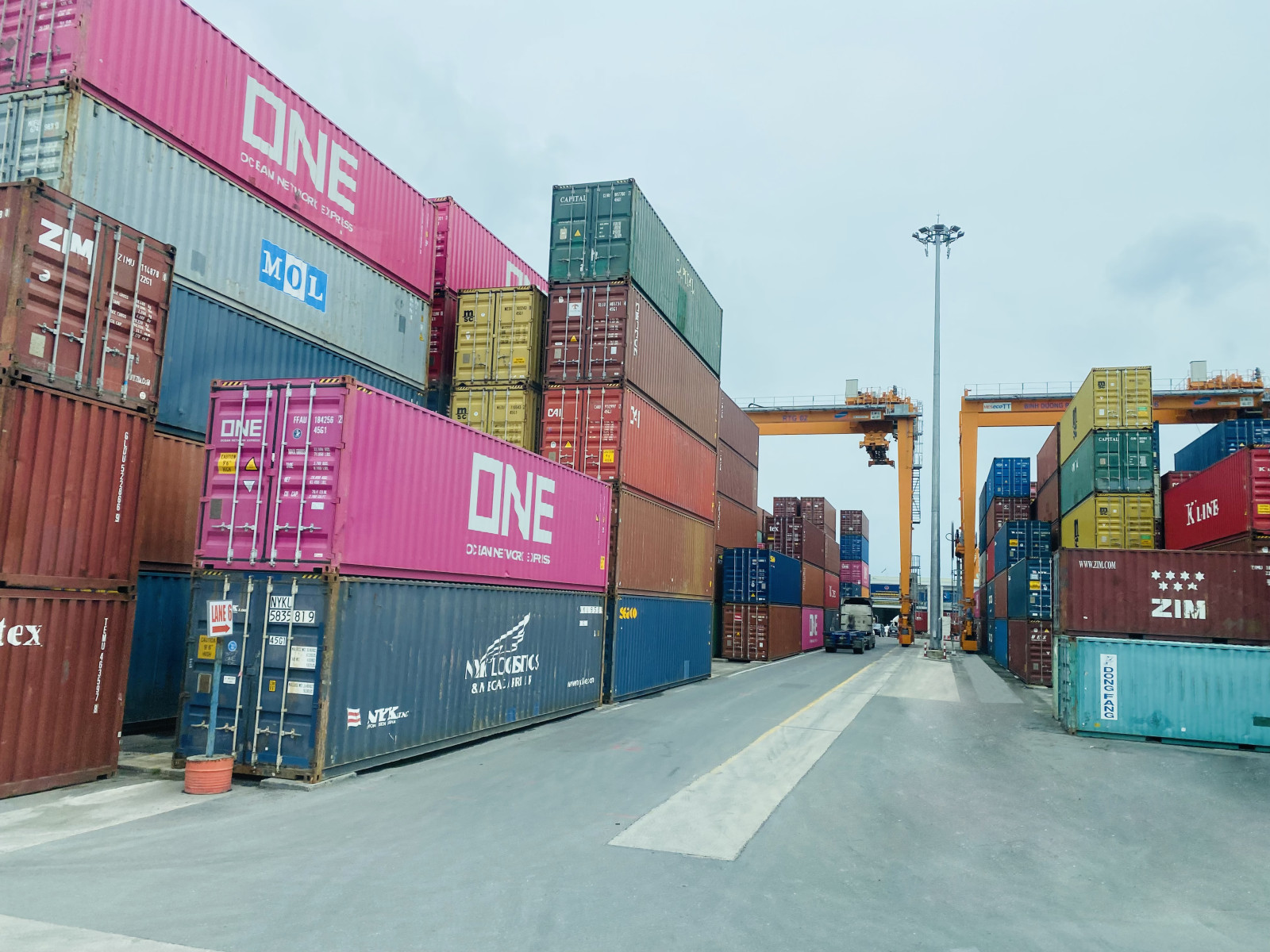Upholding advantages, improving logistics services
Part 1: New Vision for Southeastern region
The southern region accounts for 60% of the country's goods output. If improving logistics, the region will support domestic production activities, increasing the competitiveness of exports. And if transportation problems can be solved, reducing transportation costs, the region’s economic difficulties in the current situation will be solved.
“Bottleneck” in growth
Not only playing the role of economic locomotive in the southern key economic region, the Southeastern region is also an area where important infrastructure and logistics services are concentrated, handling the transportation of most of the country's goods. According to statistics, the Southeastern region has about 14,800 logistics service providers, accounting for 49.2% of the total number of logistics enterprises in the country. There are over 11,000 logistics enterprises in HCM city, over 1,600 in Binh Duong province, over 1,200 in Dong Nai … However, up to now, the field of logistics for the Southeastern region still has lots of “bottlenecks” that need to be removed.
 Cargo service activities at Binh Duong port
Cargo service activities at Binh Duong port
The Politburo’s Resolution No.24-NQ/TW dated October 7th, 2022 on socio-economic development and assurance of national defense and security in the Southeastern region to 2030, with a vision to 2045 has also indicated the "bottlenecks" of regional development. Specifically, it is the regional and inter-regional infrastructure network, especially the regional and inter-regional transport infrastructure system, which is not still synchronous. High-quality logistics human resources have not yet met the demand, and logistics costs are still high. The linkage between production - import-export enterprises and logistics ones is low in terms of efficiency. Large-scale logistics centers have not been established yet…
According to Huynh Van Cuong, CEO of Saigon Port Joint Stock Company, this is a "bottleneck" leading to many challenges for logistics businesses. The road transport infrastructure has not yet met the demand because roads are small, narrow with limited load (especially for containers and construction goods). There are too many intersections, causing traffic congestion and conflicts. “The road traffic has not yet met the appropriate load for goods trade, connecting ports with industrial parks, factories, and warehouses while multimodal transport has not been effective because of the lack of connection between railway - road - inland waterway. The investment in these methods is not synchronized, often warped and lacks consistency in both goals and plan on time for implementation", said Mr. Cuong.
Businesses suggested that with the role of "conductor" of the southern key economic region, to turn logistics into a spearheading sector, Ho Chi Minh city and other localities need to quickly "transform", focusing on implementing many strategic solutions, including investing in the development of traffic infrastructure, building airports, seaports and railways; implementing solutions to develop human resources, perfecting solutions to apply information technology in combination with digital transformation programs so that logistics can really uphold its strengths and make great contributions to the economic development structure for the region in particular and the country in general.
Enhancing responsibility in linkage
In order to solve these problems, localities have proposed and implemented many plans and strategies with the goal of improving logistics activities and enhancing regional connectivity. Vo Van Minh, Vice-Secretary of provincial Party Committee, Chairman of provincial People's Committee said that after a period of rapid industrial development, the increasing demand for passenger and goods transport has made the local socio-economic infrastructure get overloaded. “The traffic of the arterial roads is getting bigger and bigger while the lack of connectivity and synchronization with the type of rail and inland waterway traffic has increased the travel time from Binh Duong to sea ports and international airport, thereby increasing costs for businesses, reducing competitive advantages.
Nguyen Thi Hoang, Vice-Chairwoman of Dong Nai provincial People's Committee said that in the 2016-2020 period, the GDP economic growth rate of the Southeastern region reached 6.72% while the Northern key economic region gained 9.08%. Although the Southeast's position in the economy is still at the top, it has been reduced, and its role as a driving force and leader has been weakened.
Dong Nai, Binh Duong and Ho Chi Minh city have the highest percentage of immigrants in the country. This contributes to the economic development of the three localities, but also makes them face many difficulties. Although localities have made efforts, most of the gateways connecting traffic are stuck, seriously affecting the socio-economic development of Ho Chi Minh city and the Southeastern region. “Ho Chi Minh City, Dong Nai and Binh Duong have great advantages in water and maritime traffic with a series of important routes. However, their exploitation activities are still limited, not reaching their full potential and not sharing the pressure for the overloaded road traffic. It is necessary to exploit more advantages of the waterway transportation system", suggested Mrs. Hoang.
Politburo member and Secretary of Ho Chi Minh city’s Party Committee Nguyen Van Nen said that connecting regional infrastructure is a problem, requiring localities to join hands and promote their local potential together with contributing initiatives to improve and promote the most favorable regional logistics activities. It is necessary to deliberate the general interests of the whole region rather than the local interests. There is a policy to develop traffic infrastructure with focus on developing the network of highways and belt roads of Ho Chi Minh city. “It is necessary to proactively develop specific action plans of each locality and region and improve operational regulations. Ho Chi Minh city and other provinces in the region need to strengthen digital data connection in the process of cooperation and development to quickly solve the region’s action programs. (To be continued)
Reported by Tieu My-Translated by Kim Tin

